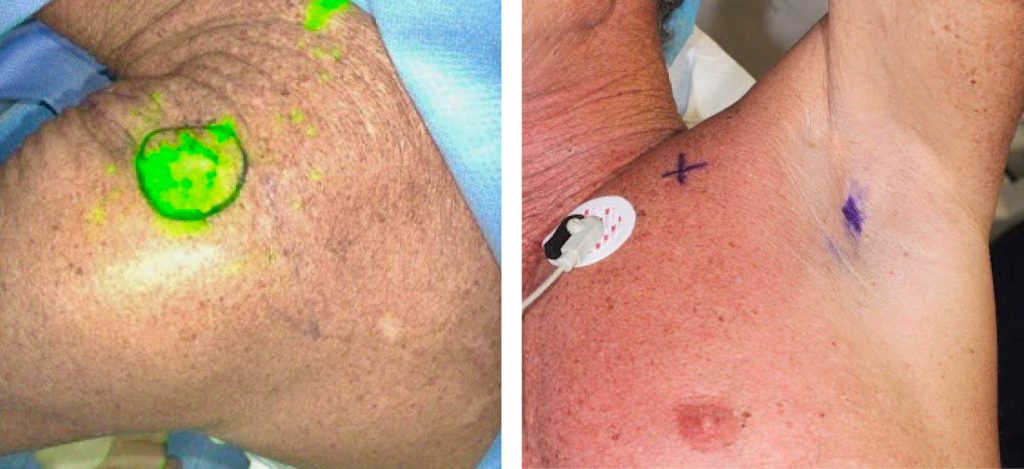

Overall, 1560 women (780 per arm) will be enrolled to decide whether the group without treatment of the axilla is no worse than the reference group, given a margin delta of non-inferiority of 2.5% (maximum tolerable 5-years DDFS = 94%). For the purpose of sample size calculation, the 5-year DDFS in the reference group is assumed to be 96.5%. We will consider women who will undergo SLNB as the reference group, and we will test for non-inferiority the group of women not undergoing any treatment in the axilla. Sample size calculation and statistical considerations Other secondary endpoints are quality of life and evaluation of type of adjuvant treatment administered.
SENTINEL NODE FREE
Secondary endpoints will be the cumulative incidence of distant recurrences, the cumulative incidence of axillary recurrences, the disease free survival (DFS) and the overall survival (OS). This endpoint, a proxi of overall survival, will allow to have reliable results in a shorter period of time compared to overall survival. The primary endpoint of the study is distant-disease free survival. To verify whether, in presence of a negative preoperative axillary assessment, SLN can be spared to verify whether, in presence of a negative preoperative axillary assessment, the decision on adjuvant medical treatment can be taken according only to the biology of the tumour without the prognostic information achieved by SLNB on the nodal status to verify whether, in presence of a negative preoperative axillary assessment, the patients' quality of life can be improved by a less invasive surgical procedure. SLNB will be completed by axillary dissection in presence of macrometastases diagnosed in the SLN. No axillary surgical staging In the arm 1, no axillary dissection will be performed in case of either negative SLN or in presence of isolated tumour cells or micrometastases.
SENTINEL NODE TRIAL
This is a prospective randomized controlled trial in which patients with small breast cancer (T<2 cm), with a negative preoperative assessment of the axilla (ultra-sound with FNAC in presence of doubtful findings) will be randomized into two treatment arms: Moreover, to date the impact of the prognostic information of axillary lymph node status in the decision-making process is less important than in the past as the adjuvant treatment is more and more tailored on the biological features of the disease rather than on the risk of recurrence. no further axillary surgery in presence of positive SLN did not show any difference in term of overall and disease-free survival. Recent data from a prospective randomized trial which compared axillary dissection vs. In fact, it is well known that removal of lymph nodes is performed with staging purposes and to improve regional control but not with curative intent. The evident trend of breast cancer treatment is going towards minimizing axillary surgery, even in presence of involvement of the sentinel lymph node (SLN). Sentinel lymph node biopsy (SLNB) is the standard approach for axillary staging in patients with breast cancer worldwide. to verify whether, in presence of a negative preoperative axillary assessment, the patients' quality of life can be improved by a less invasive surgical procedure.to verify whether, in presence of a negative preoperative axillary assessment, the decision on adjuvant medical treatment can be taken according only to the biology of the tumour without the prognostic information achieved by SLNB on the nodal status.to verify whether, in presence of a negative preoperative axillary assessment, SLN can be spared.The aims of this prospective randomized study are: pre-operative imaging of the axilla can identify patients with clinically relevant nodal burden.avoiding axillary surgery does not worsen the outcome of patients with small breast cancer the absence of the pathological information on the risk of recurrence given by nodal status is not worsening outcome of these patients.Why Should I Register and Submit Results?.


 0 kommentar(er)
0 kommentar(er)
